GoSwap Crypto Exchange Review 2025 - Features, Fees, and Viability
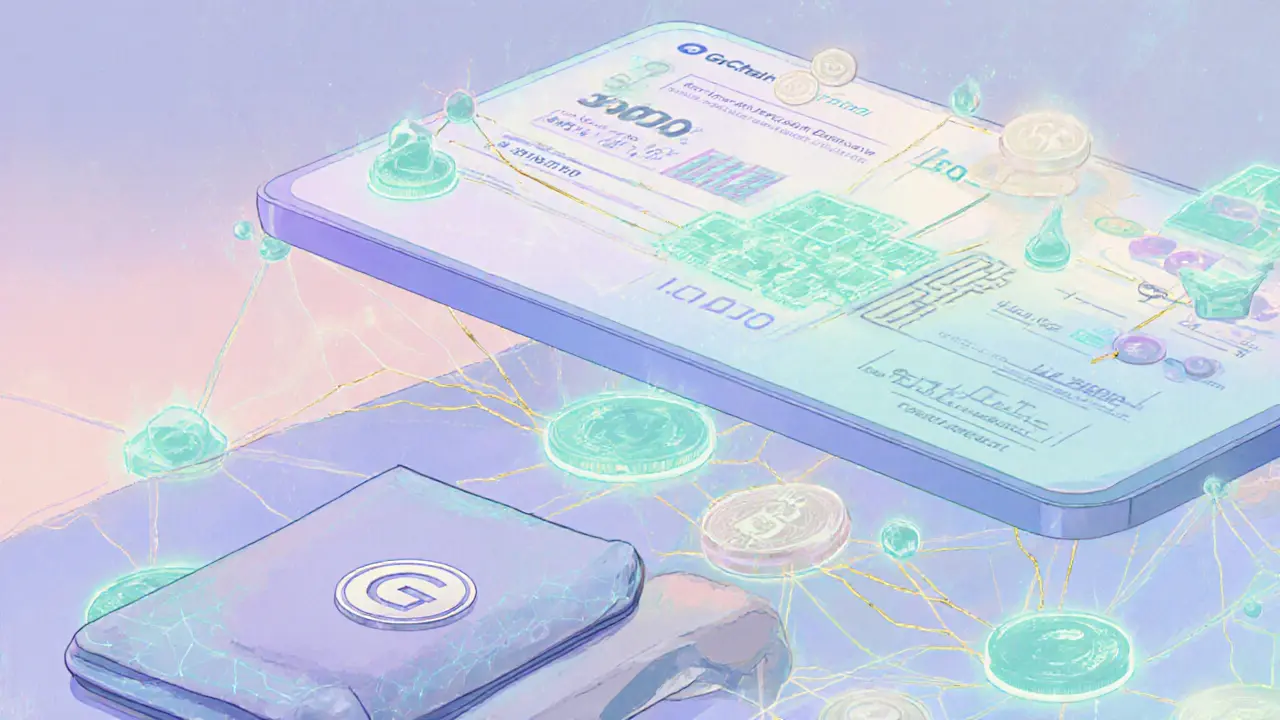
GoSwap vs. Leading DEXs Comparison Tool
| Feature | GoSwap | Uniswap (v4) | Godex |
|---|---|---|---|
| Blockchain | GoChain | Ethereum + 11+ networks | Multi-chain (300+ assets) |
| Fee Rate | 0.15% (claimed) | 0.30% base, variable | Flat 0.25% |
| Avg. Daily Volume* | ~$0 (untracked) | $5B+ | $250M+ |
| Token Coverage | Limited (few listed pairs) | Thousands of tokens | 300+ cryptocurrencies |
| Liquidity Incentives | Experimental LP rewards | Yield farming, liquidity mining | No native incentives |
| Security Audits | None publicly disclosed | Multiple third-party audits | Audited by CertiK (2024) |
*Values are approximate and sourced from on-chain analytics platforms.
Based on current metrics, GoSwap is recommended for users seeking ultra-low fees and willing to provide their own liquidity. However, for most traders requiring deep markets and minimal slippage, established platforms like Uniswap or Godex remain the safer choices.
Key Takeaways
- GoSwap runs on the GoChain blockchain and uses an Automated Market Maker (AMM) model similar to Uniswap.
- It currently shows an "untracked" status on CoinMarketCap with virtually no visible trading volume.
- Lower fees and fast settlement are promised, but real‑world liquidity is almost nonexistent.
- Compared with leading DEXs, GoSwap falls short on token variety, community support, and security audits.
- For most traders, sticking with established platforms like Uniswap or Godex remains the safer bet.
GoSwap is an automated market maker (AMM) decentralized exchange built on the GoChain blockchain. It aims to give users ultra‑low fees and near‑instant settlement, mirroring the core functionality of popular AMM platforms such as Uniswap.
GoChain is a public blockchain that touts higher throughput and lower gas costs than Ethereum. Its consensus model combines proof‑of‑authority with proof‑of‑stake, allowing transaction finality in seconds and fees that often stay below $0.001.
The AMM model replaces traditional order books with liquidity pools. Users deposit pairs of tokens, and the smart contract algorithmically determines prices based on pool ratios. This design eliminates the need for matching engines and enables permissionless trading.
How GoSwap Works - The Technical Core
The platform’s smart contracts are written in Solidity and deployed on GoChain. Each pool follows the classic constant‑product formula x*y=k, where x and y represent the reserves of the two tokens and k remains constant. When a trader swaps token A for token B, the pool automatically adjusts the reserves, causing the price to shift.
Key attributes of the GoSwap protocol:
- Zero‑knowledge proof integration for optional privacy (still experimental).
- Fee structure advertised at 0.15% per trade, split between liquidity providers and the protocol treasury.
- Instant finality thanks to GoChain’s 4‑second block time.
Despite these technical promises, the ecosystem’s health hinges on the depth of its liquidity pools. Without sufficient capital, slippage spikes and trades become impractical.
Current Market Activity - What the Data Shows
As of October2025, CoinMarketCap lists GoSwap under an "Untracked" status. This classification means that neither price nor volume data are being aggregated. A quick look at the GoSwap UI reveals either empty pair listings or a message stating "No data is available now" for all tokens.
The absence of observable trading volume raises three possible scenarios:
- The platform is still in a private beta, restricting public access.
- Technical issues are preventing pool liquidity from being displayed.
- Community interest has not materialized, leaving pools under‑funded.
In practice, the last scenario appears most likely. Established DEXs process billions in daily volume, while GoSwap’s metrics sit at zero.

Comparing GoSwap with Leading Decentralized Exchanges
| Feature | GoSwap | Uniswap (v4) | Godex |
|---|---|---|---|
| Blockchain | GoChain | Ethereum + 11+ networks | Multi‑chain (300+ assets) |
| Fee Rate | 0.15% (claimed) | 0.30% base, variable | Flat 0.25% |
| Avg. Daily Volume* | ~$0 (untracked) | $5B+ | $250M+ |
| Token Coverage | Limited (few listed pairs) | Thousands of tokens | 300+ cryptocurrencies |
| Liquidity Incentives | Experimental LP rewards | Yield farming, liquidity mining | No native incentives |
| Security Audits | None publicly disclosed | Multiple third‑party audits | Audited by CertiK (2024) |
*Values are approximate and sourced from on‑chain analytics platforms.
From the table it’s clear that GoSwap lags behind on almost every metric that matters to traders: volume, token variety, audit transparency, and community incentives.
User Experience - What Traders Can Expect
Because the UI is minimalist, there’s no KYC, no account creation, and no fee‑swapping wizard. That simplicity aligns with other DEXs, but the lack of visible pools translates into a bland experience: the swap button stays disabled until you add liquidity yourself.
Community feedback is virtually nonexistent on Reddit, Trustpilot, and major crypto forums. In contrast, Uniswap and Godex receive thousands of daily posts, ranging from troubleshooting to advanced strategy discussions. A healthy community often signals reliability and quicker bug fixes.
Risk Assessment - Security, Regulation, and Custody
Decentralized exchanges operate without custodial control, meaning users hold their private keys. This model eliminates the need for KYC but also places the entire security burden on the individual.
Key risks specific to GoSwap:
- Smart contract exposure: No publicly available audit reports, so vulnerabilities may exist.
- Liquidity scarcity: With near‑zero pool depth, price manipulation is easier for a single large holder.
- Regulatory gray area: While DEXs face fewer formal regulations, jurisdictions may still target platforms that facilitate illicit activity.
- Operational opacity: The untracked status makes it hard to verify whether the protocol is fully live or in a paused state.
For users who prioritize security, platforms with clear audit trails and active bug‑bounty programs are safer bets.
Should You Trade on GoSwap? - Decision Guide
Here’s a quick decision flow you can use:
- Do you need ultra‑low fees and are you comfortable providing your own liquidity? If yes, explore GoSwap’s pool creation feature.
- Are you looking for deep markets and minimal slippage? If no, stick with Uniswap or Godex.
- Is audit transparency a must‑have? If yes, avoid GoSwap until an independent audit is published.
In most practical scenarios, the answer to #2 will be “no,” making GoSwap a niche option rather than a primary trading venue.

Getting Started - Step‑by‑Step (If You Still Want to Try)
- Set up a GoChain‑compatible wallet (e.g., MetaMask configured for GoChain Mainnet).
- Obtain GoChain’s native token (GOC) to pay for gas.
- Visit the official GoSwap URL (verify the domain to avoid phishing).
- Connect your wallet and navigate to the "Add Liquidity" tab.
- Select a token pair, input amounts, and approve the transaction in your wallet.
- Confirm the pool creation; you’ll receive LP tokens representing your share.
Remember, you’re effectively becoming a market maker. Without other participants, you may end up holding illiquid assets.
Future Outlook - What Could Change?
GoSwap’s success hinges on three factors:
- Liquidity drives usage - a partnership with a DeFi launchpad could inject capital.
- Security - publishing a third‑party audit would boost confidence.
- Community building - incentives like token airdrops or yield farming could spark interest.
If any of these materialize, the platform could climb out of the "untracked" status. Until then, analysts view it as a high‑risk, low‑reward experiment.
Frequently Asked Questions
Is GoSwap safe to use?
Safety is questionable because no public audit has been released and the platform shows virtually no trading activity. Users should only allocate funds they can afford to lose.
How do I add liquidity on GoSwap?
Connect a GoChain‑compatible wallet, go to the "Add Liquidity" page, choose a token pair, approve the token transfers, and confirm the pool creation. You’ll receive LP tokens representing your share.
Why is GoSwap listed as "untracked" on CoinMarketCap?
CoinMarketCap marks exchanges as untracked when they lack verifiable volume data. GoSwap currently reports zero observable trades, so the platform falls into this category.
Can I trade any token on GoSwap?
Only tokens that have an existing liquidity pool on GoChain can be swapped. At the moment, the list is very short, limiting trading options.
How does GoSwap’s fee compare to other DEXs?
GoSwap advertises a 0.15% fee, which is lower than Uniswap’s typical 0.30% but higher than some layer‑2 solutions that dip below 0.05%.
Bottom line: if you’re chasing low fees and you’re comfortable providing liquidity, GoSwap could be an experimental playground. For most traders who need reliable markets, deep liquidity, and audited code, established platforms still win the day.

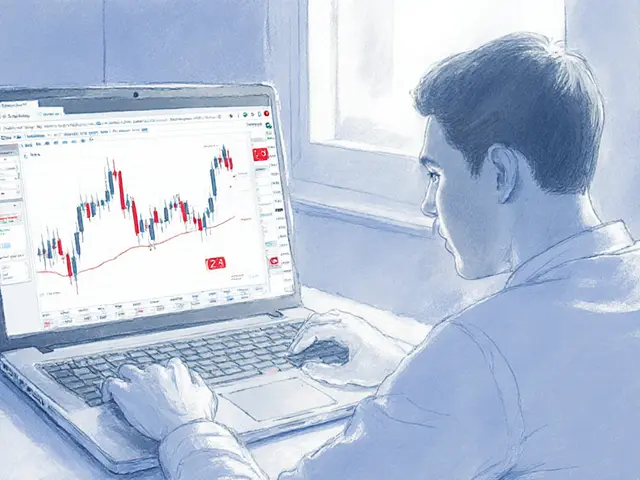
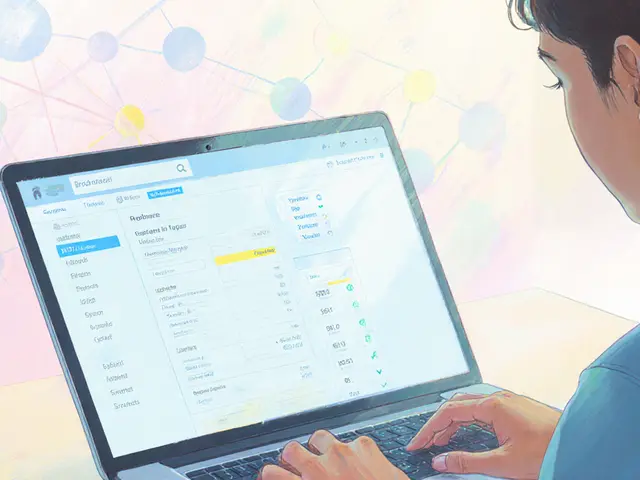
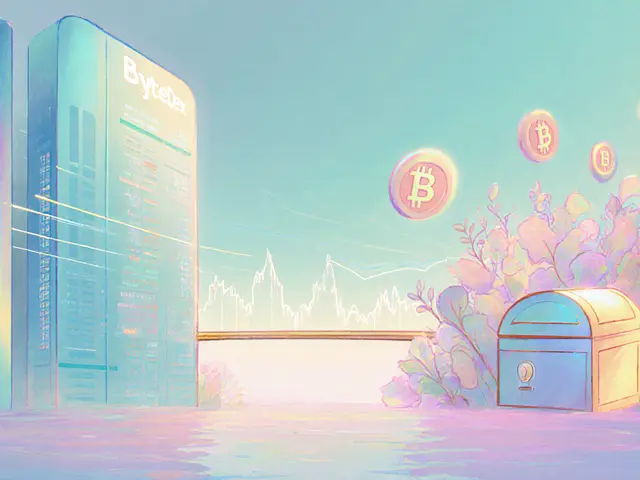

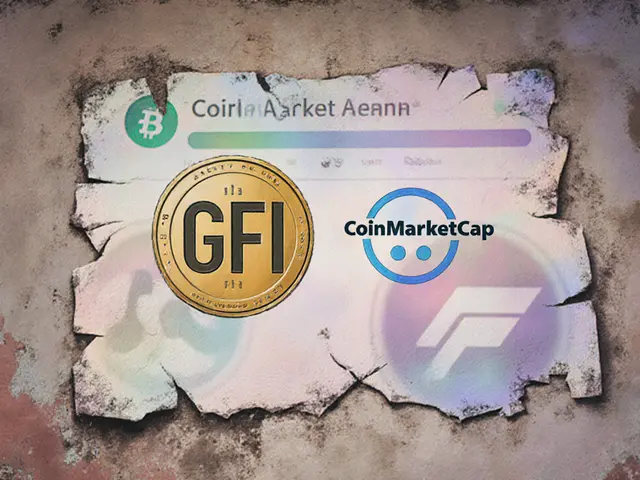
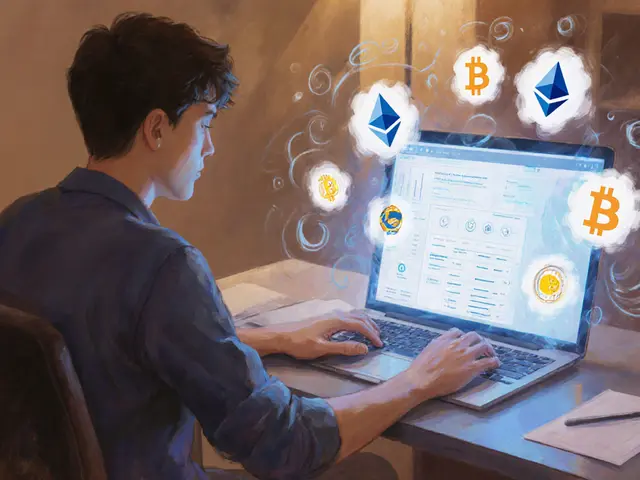

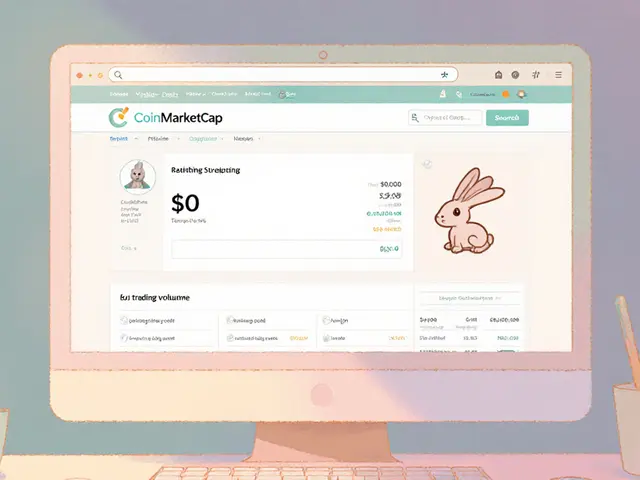
Zero‑point‑one‑five percent sounds like a bargain, yet the phantom volume on GoSwap screams louder than any fee banner. When you stare at a table that reads “~$0 (untracked)”, you glimpse the abyss of liquidity that traders dread. The scarcity of audited contracts turns the platform into a high‑stakes gamble rather than a reliable exchange. In a market where slippage can devour half your position, low fees become a moot point. So, the promise of cheap trades is quickly eclipsed by the reality of almost nonexistent market depth.
The whole thing feels like a vanity project dressed up as a DEX, and anyone who buys into the hype is basically funding a mirage. Low fees are meaningless when you can’t even find a pool to swap; you’re just staring at an empty order book. Cut the fluff and stick with venues that actually move money.
The landscape of decentralized finance has become a sprawling ecosystem where every newcomer claims to rewrite the rules of trade. GoSwap, perched atop the GoChain blockchain, presents itself as the modest underdog promising ultra‑low transaction costs and lightning‑fast settlement. Yet beneath that sleek marketing veneer lies a stark reality: a barren liquidity desert that leaves even the most intrepid arbitrageurs stranded. The platform’s fee schedule of 0.15 % may appear seductive, especially when juxtaposed against Uniswap’s customary 0.30 %, but fees are only a slice of the pie if the rest of the pie is missing. Traders who venture onto GoSwap today will likely encounter an almost non‑existent order flow, as evidenced by the “untracked” status on CoinMarketCap and the conspicuous absence of any discernible daily volume. This vacuum of activity translates directly into catastrophic slippage, wherein a modest trade can silently erode half of your intended position before the transaction finalizes. Moreover, the absence of publicly disclosed security audits amplifies the risk, turning the platform into a potential haven for undiscovered smart‑contract vulnerabilities. In the world of DeFi, confidence is often built upon community scrutiny, bug‑bounty programs, and transparent audit reports-elements that GoSwap currently lacks. While the GoChain network touts sub‑cent gas fees and sub‑second block times, those technical merits become moot if users cannot find counterparties willing to provide liquidity. The experimental LP rewards program is another thin veil, attempting to coax liquidity providers with incentives that may not outweigh the opportunity cost of capital being locked in shallow pools. Comparatively, established DEXs such as Uniswap and Godex not only showcase billions in daily volume but also maintain rigorous audit regimes and vibrant community forums where issues are rapidly surfaced and resolved. For a trader whose primary goal is efficient execution and capital preservation, the risk‑reward calculus heavily favors the proven giants over a fledgling experiment. That said, adventurous souls who relish the prospect of being early adopters and are comfortable absorbing the inherent risks might find a niche playground within GoSwap’s experimental corridors. The crucial takeaway, however, remains that low fees should never be the sole metric guiding platform selection; depth, security, and token variety are equally, if not more, essential. As the DeFi sector matures, projects that fail to demonstrably address these core pillars will likely remain on the periphery, serving only as footnotes in the annals of crypto experimentation. Consequently, prospective users should approach GoSwap with the same caution they would apply to any high‑risk, low‑liquidity venture, allocating no more capital than they are prepared to lose.
Sounds like a hype train that never left the station.
yeah the vibe is chill but the data just isn’t there it feels like watching a ghost market
When a platform advertises speed and cheapness, the underlying assumption is that users will overlook the silent cost of uncertainty. The lack of visible liquidity is not just a statistic; it’s a narrative of trust missing from the ecosystem. Without that trust, even the most elegant code can’t persuade a rational trader to commit capital.
If you’re curious about how to test the waters, start with a tiny amount of GOC, add it to a low‑risk pool, and watch the slippage on a few swaps. 👀 This way you’ll see firsthand whether the 0.15 % fee actually translates into savings or gets swallowed by poor depth. Remember, experimenting on a demo net or a testnet can also save you from unexpected losses. 👍
The operational throughput of GoSwap, while ostensibly leveraging GoChain’s PoA/PoS hybrid, currently suffers from suboptimal liquidity provisioning, which in turn manifests as elevated price impact during execution. Consequently, the token swap efficiency metric deteriorates despite the nominal fee advantage. A strategic reallocation of capital towards incentivized LP schemes could potentially ameliorate these deficiencies.
Stay focused on building robust pools; even a modest liquidity base can attract more traders over time. Your perseverance can turn a sleepy DEX into a vibrant micro‑market.
There’s still a window for GoSwap to carve out a niche, especially if the team pilots a partnership with a DeFi launchpad. An influx of capital would instantly improve depth, making the low‑fee model genuinely attractive. Keep an eye on community announcements for any sign of such collaborations.
Don’t let the current numbers discourage you-use them as a rallying point to push for better incentives! A collective push from the community can pressure the developers into releasing an audit and more token pairs.
Whilst the prevailing sentiment extols the virtues of established decentralized exchanges, it would be remiss to dismiss GoSwap outright merely due to its embryonic stage. One must consider that pioneering platforms often endure an initial paucity of liquidity before achieving critical mass. Moreover, the modest fee structure, albeit nascent, may present a competitive edge should the ecosystem mature. Thus, a judicious observer might allocate a tokenized stake as a speculative hedge rather than an outright abstention. In the grand tableau of decentralized finance, early engagement can sometimes yield disproportionate returns.
Think of GoSwap as a sandbox-you can experiment, learn, and maybe even shape its future. Share your insights on the forum, suggest audit roadmaps, and encourage others to bring liquidity. Together you can turn the “untracked” label into a badge of community‑driven growth.